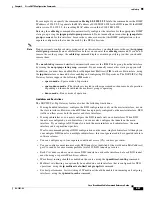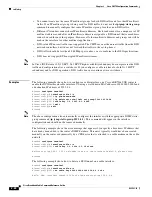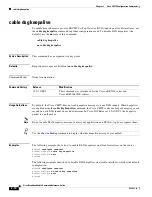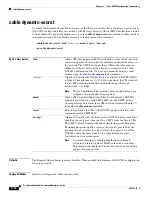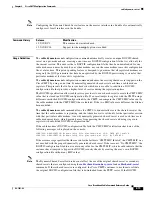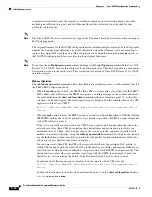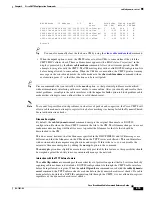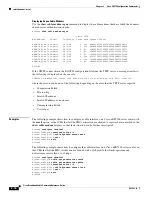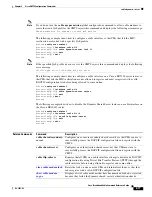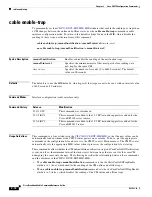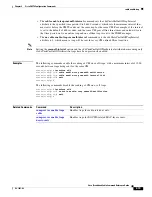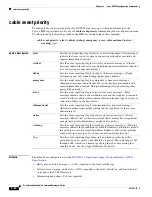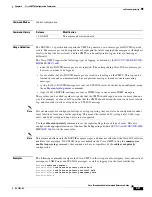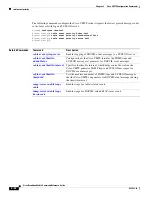
2-81
Cisco Broadband Cable Command Reference Guide
OL-1581-08
Chapter 2 Cisco CMTS Configuration Commands
cable event priority
Command Modes
Global configuration
Command History
Usage Guidelines
The DOCSIS 1.1 specifications require the CMTS to generate a set of messages for DOCSIS-specific
events. These messages can be assigned one of eight priority levels, ranging from emergency (the highest
level) to debug (the lowest level), and the CMTS can be configured to log each level of messages
differently.
The Cisco CMTS supports the following types of logging, as defined by the
DOCS-CABLE-DEVICE-
MIB
MIB (
RFC 2669
):
•
none (0x0) = DOCSIS messages are not reported. (The corresponding Cisco IOS event messages,
however, continue to be logged.)
•
local-volatile (0x10) = DOCSIS messages are saved in a local log on the CMTS. This log can be
limited in size and can automatically discard previous messages to make room for incoming
messages.
•
syslog (0x20) = DOCSIS messages are sent to a SYSLOG server (if one has been configured, using
the
cable event syslog-server
command).
•
traps (0x40) = DOCSIS messages are sent as SNMP traps to one or more SNMP managers.
These values can be added together to specify that the CMTS should report an event in more than one
way. For example, a value of 0x70 specifies that the CMTS should record the event in its local volatile
log, and also send it both as a trap and as a SYSLOG message.
Note
If event messages are configured for traps or syslog reporting, they must also be configured for either
local volatile or local non-volatile reporting. This means that values 0x20 (syslog-only), 0x40 (trap-
only), and 0x60 (syslog and trap only) are not supported.
Use the
cable event priority
command to set the reporting flags for each type of event. This also
configures the appropriate instance of the docsDevEvReporting attribute
DOCS-CABLE-DEVICE-MIB
MIB (
RFC 2669
) with the same value.
Note
This command affects only the DOCSIS event messages, and does not affect how the Cisco IOS software
handles event messages. If SYSLOG traps are enabled on the Cisco CMTS (using the
snmp-server
enable traps syslog
command), they continue to be sent, regardless of the
cable event priority
configuration.
Examples
The following commands configure the Cisco CMTS so that it reports all emergency, alert, and critical
messages as SNMP traps and SYSLOG messages, as well as logging it in the local volatile log:
Router#
configure terminal
Router(config)#
cable event priority alert 0x70
Router(config)#
cable event priority critical 0x70
Router(config)#
cable event priority emergency 0x70
Router(config)#
Release
Modification
12.2(8)BC1
This command was introduced.

